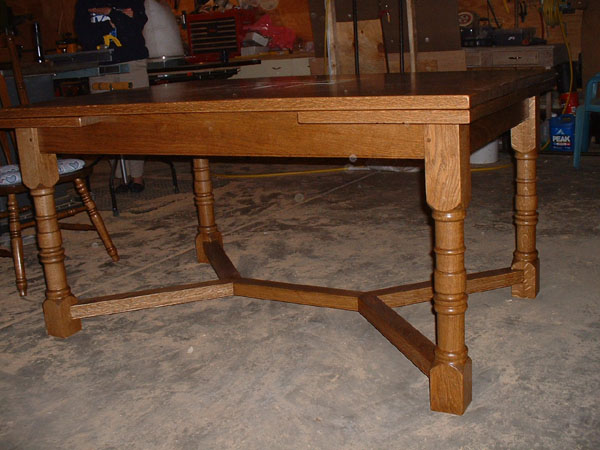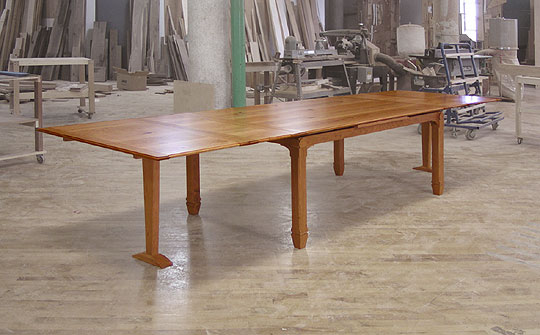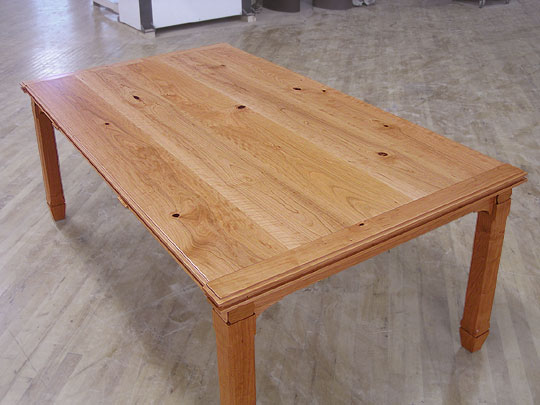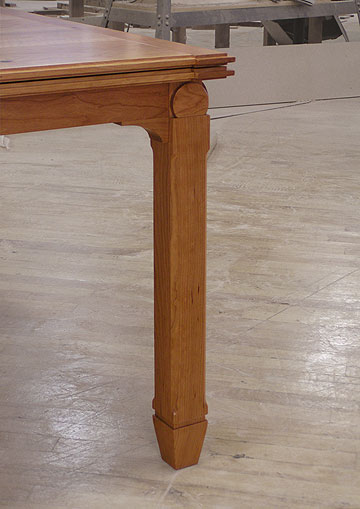Question
I designed and built a Dutch drawleaf dining room table two years ago. The table is made of white oak and finished with catalyzed lacquer. The top is 30mm thick and the extension leaves store under the top on the ends and can be pulled out and popped up to add 18 inches on each end of the table. I made the top and the leaves as one single glue-up with the grain running the length of the table. Since I used clips in grooves in the apron, the main top has stayed nice and flat, but as you may have guessed, the leaves have warped and now the outside edges droop (about 1/4" to 3/8") and the extension is no longer flat with the top when extended. I now realize that I should have used a breadboard end (possibly both ends of the extensions) or something, but I was too preoccupied with maintaining the continuous grain pattern from the top to the extensions.
How can I fix the problem? My thought is to cut tenons on the ends and add a breadboard end (or both ends), but how do I straighten the leaves to accept the cross-end breadboard piece or is there some other remedy that I could use? Would removing the finish and dampening the concave side work?

Forum Responses
(Furniture Making Forum)
I think you are on the right track thinking about stripping and using moisture to get the leaves straight so you can machine them. It would be a pain, but it could work. One other thing you could try that is also a pain would be to use a heat source to get them flat. Many times when I have a problem panel or something that cups, I set it near the woodstove (not too close!) in my shop and since a panel tends to go hollow on the heated side, I place the convex side of the cupped panel toward the stove.
In either case, you will have to work fast and probably even stop and reflatten a few times during the process of adding the breadboard ends. I am having a problem in my shop right now with some wide maple boards required on a project that won't stay flat. I tested the stock for casehardening and I believe that is the problem. In the future I will try to get air dried stock because it will have zero casehardening and casehardening is what causes cupping. Also, of course on wider boards, it is advisable to rip them and glue them back together, which will break the continuity of the grain and if you get cupping, you will get two or more small cups instead of one large one. One other important thing to remember is that the thicker the stock, the less cupping you will get.


